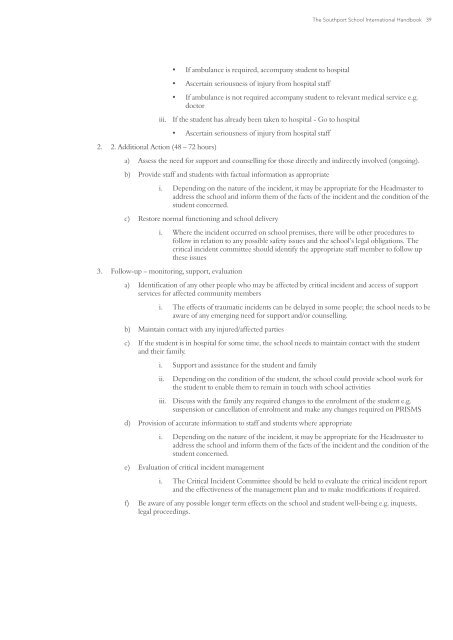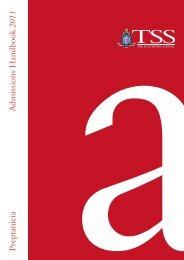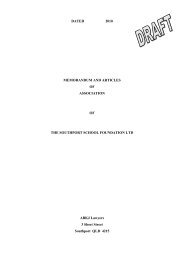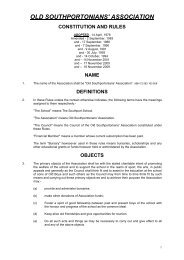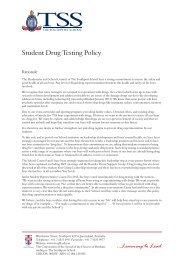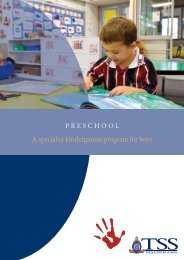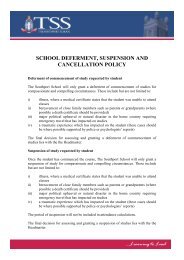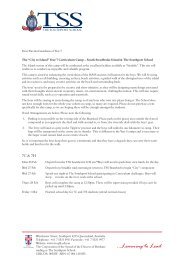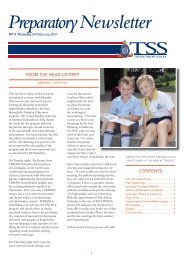International Student Handbook - The Southport School
International Student Handbook - The Southport School
International Student Handbook - The Southport School
You also want an ePaper? Increase the reach of your titles
YUMPU automatically turns print PDFs into web optimized ePapers that Google loves.
<strong>The</strong> <strong>Southport</strong> <strong>School</strong> <strong>International</strong> <strong>Handbook</strong> 39<br />
2. 2. Additional Action (48 – 72 hours)<br />
• If ambulance is required, accompany student to hospital<br />
• Ascertain seriousness of injury from hospital staff<br />
• If ambulance is not required accompany student to relevant medical service e.g.<br />
doctor<br />
iii. If the student has already been taken to hospital - Go to hospital<br />
• Ascertain seriousness of injury from hospital staff<br />
a) Assess the need for support and counselling for those directly and indirectly involved (ongoing).<br />
b) Provide staff and students with factual information as appropriate<br />
i. Depending on the nature of the incident, it may be appropriate for the Headmaster to<br />
address the school and inform them of the facts of the incident and the condition of the<br />
student concerned.<br />
c) Restore normal functioning and school delivery<br />
i. Where the incident occurred on school premises, there will be other procedures to<br />
follow in relation to any possible safety issues and the school’s legal obligations. <strong>The</strong><br />
critical incident committee should identify the appropriate staff member to follow up<br />
these issues<br />
3. Follow-up – monitoring, support, evaluation<br />
a) Identification of any other people who may be affected by critical incident and access of support<br />
services for affected community members<br />
i. <strong>The</strong> effects of traumatic incidents can be delayed in some people; the school needs to be<br />
aware of any emerging need for support and/or counselling.<br />
b) Maintain contact with any injured/affected parties<br />
c) If the student is in hospital for some time, the school needs to maintain contact with the student<br />
and their family.<br />
i. Support and assistance for the student and family<br />
ii.<br />
Depending on the condition of the student, the school could provide school work for<br />
the student to enable them to remain in touch with school activities<br />
iii. Discuss with the family any required changes to the enrolment of the student e.g.<br />
suspension or cancellation of enrolment and make any changes required on PRISMS<br />
d) Provision of accurate information to staff and students where appropriate<br />
i. Depending on the nature of the incident, it may be appropriate for the Headmaster to<br />
address the school and inform them of the facts of the incident and the condition of the<br />
student concerned.<br />
e) Evaluation of critical incident management<br />
i. <strong>The</strong> Critical Incident Committee should be held to evaluate the critical incident report<br />
and the effectiveness of the management plan and to make modifications if required.<br />
f) Be aware of any possible longer term effects on the school and student well-being e.g. inquests,<br />
legal proceedings.


